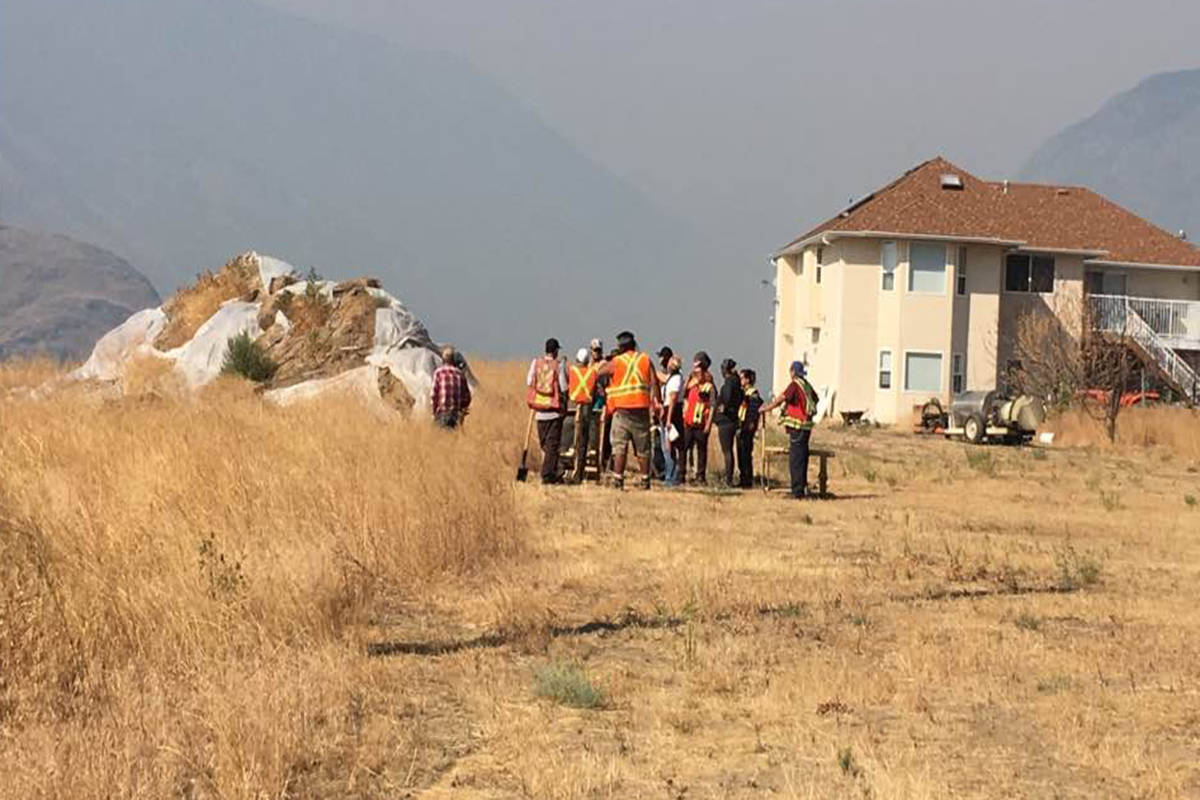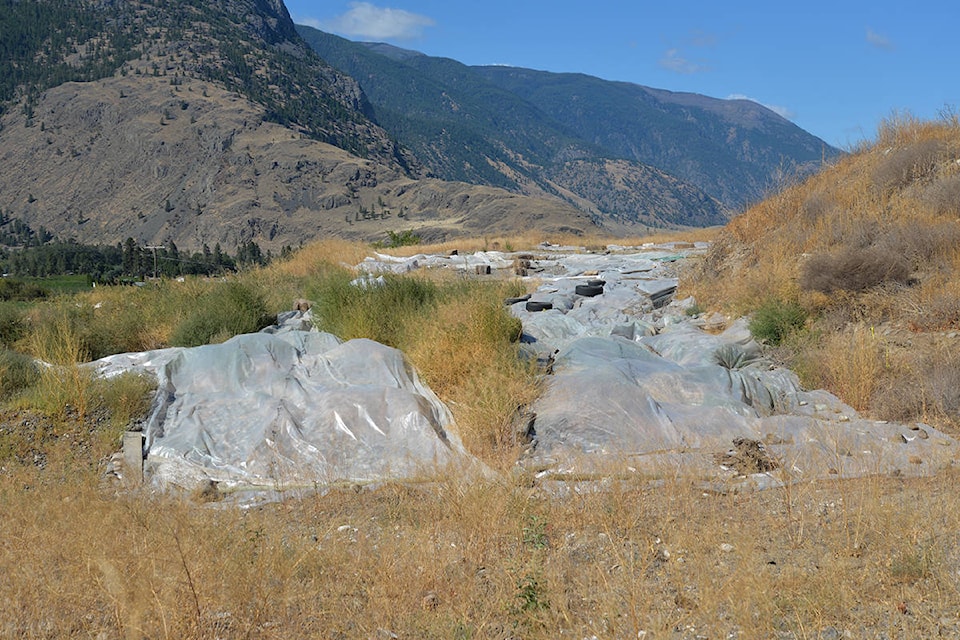A historical moment for Indigenous people occurred Monday morning at an orchard property near Keremeos.
For the first time in provincial history, the Heritage Act was used to order restoration of land where ancestral remains were unearthed.
The remains of at least seven people, including several children, were unearthed Feb. 29, 2016. The remains were found by a contractor tasked with levelling out a grassy hill so more apple trees could be planted on the property at the corner of Upper Bench Road and Daly Drive.
The Lower Similkameen Indian Band was given access to the property to collect about 500 bones and fragments in November 2016. At that time, a thin sheet of plastic secured by hay bales was put over the area and piles of earth, to protect the remaining bones and fragments.
The landowner refused access to the property for repatriation and the owner’s lawyer has cancelled several meetings with the province aimed at negotiating how to move forward.
“We’re excited right now that the ministers were able to step up, even though it’s been a-year-and-a-half, but we got more action in the last week, than the last year-and-a-half and giving us the ability to finally get our ancestors recovered so they can be buried in a good way. You know this isn’t the end of it but it’s a good start,” Chief Keith Crow of the LSIB said Monday morning prior to Natural Resource Officers cutting the lock to gate to the property.
Crow met with B.C. Premier John Horgan, Doug Donaldson, minister of Lands, Forests, Natural Resource Operations and Rural Development and their respective staff during the First Nations Summit last week.
A Day of Action was held Aug. 31 at the site with more than 150 people in attendance from First Nations communities across the province.
RELATED: Province stepping in to protect ancestral remains
A permit to do the restoration work on the property arrived Friday at the band office. The landowner was served with the order, but a warrant was needed as the gate to the property remained locked Monday. There was no sign of the property owners Monday morning.
The warrant arrived just before 10 a.m. but the about 100 people gathered continued to wait patiently as bolt cutters arrived. About eight officers were on scene including the head of the Penticton regional detachment Inspector Ted Jager. Officers were tasked with keeping the peace. Officers were often seen smiling and laughing with those gathered.
“Today we start the process of recovery. All that plastic has to be removed, all the weeds have to be pulled and screened, all the bones have to be recovered.”
Crow said the burial ground could be much larger than originally thought, as the contractor came forward who built the house on the property back in 1997, claiming bones were found then, but it was thought they were animal bones at the time. It’s unknown at this point if they were animal or human remains.
Anticipation and a sense of victory hung in the air as chiefs, band council members and elders from across the Okanagan spoke about the significance of finally beginning work to repatriate ancestors.
There was also some frustration with the previous Liberal government.
“I guess what it is, is frustration in that they could have put some effort into it instead of sitting on their hands, too afraid to enforce their own act. Why didn’t they stand behind it? If they don’t stand behind it, change that legislation to make it work,” Crow said.
Grand Chief Stewart Phillip noted the significant change of direction regarding the government and First Nations relations since the NDP government took office.
“The Horgan government has an amazing sense of respect and integrity when it comes to the highly emotional and volatile issue of Indigenous People’s ancestral remains. This has been a long standing issue in the province of British Columbia there have been many, many high profile incidents,” he said.
We will update this story with other comments throughout the day.

